
After picking up this 2015 McLaren 650S Spider car from McLaren Toronto at 4:30 on a Friday afternoon, I spent the better part of the weekend driving it on my home turf, under sunny autumnal skies on some of my favourite roads with my favourite driving partners – my camera and my GoPro – to see if it’s as amazing as it’s touted to be.
Part of the Pfaff Automotive dealer network, McLaren Toronto is one of two places in Canada where you can purchase this F1-inspired supercar. McLaren Vancouver is the other.
I captured an hour’s worth of GoPro footage and took plenty of photographs, but there was no shortage of people eager to risk a hefty fine to snap a couple photos of the car and upload them to social media while driving. Some were willing to risk even more, cutting one another off with inches to spare in traffic. I’m pretty sure we were trending. Truth be told, I loved every second of the attention the 650S drew.
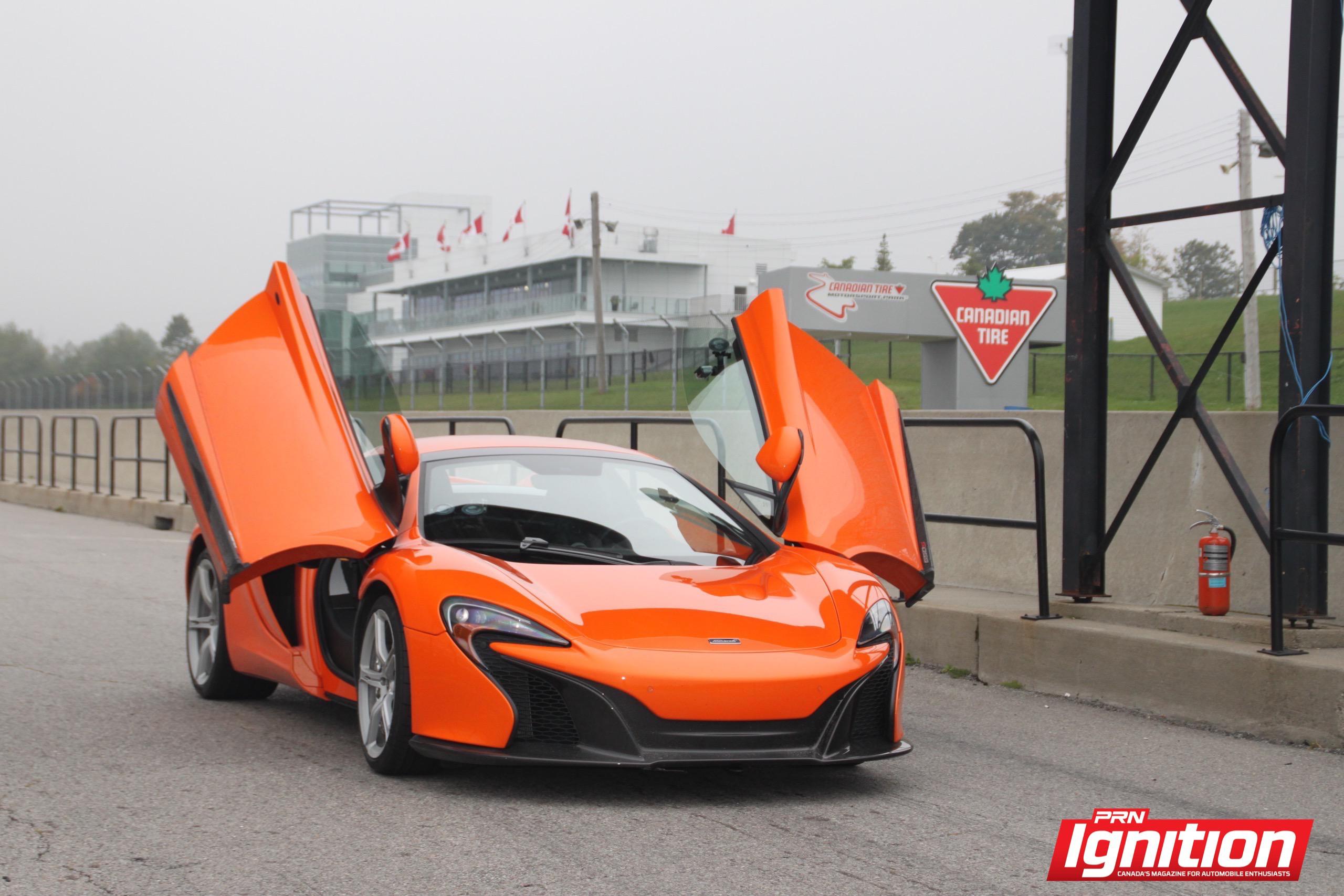
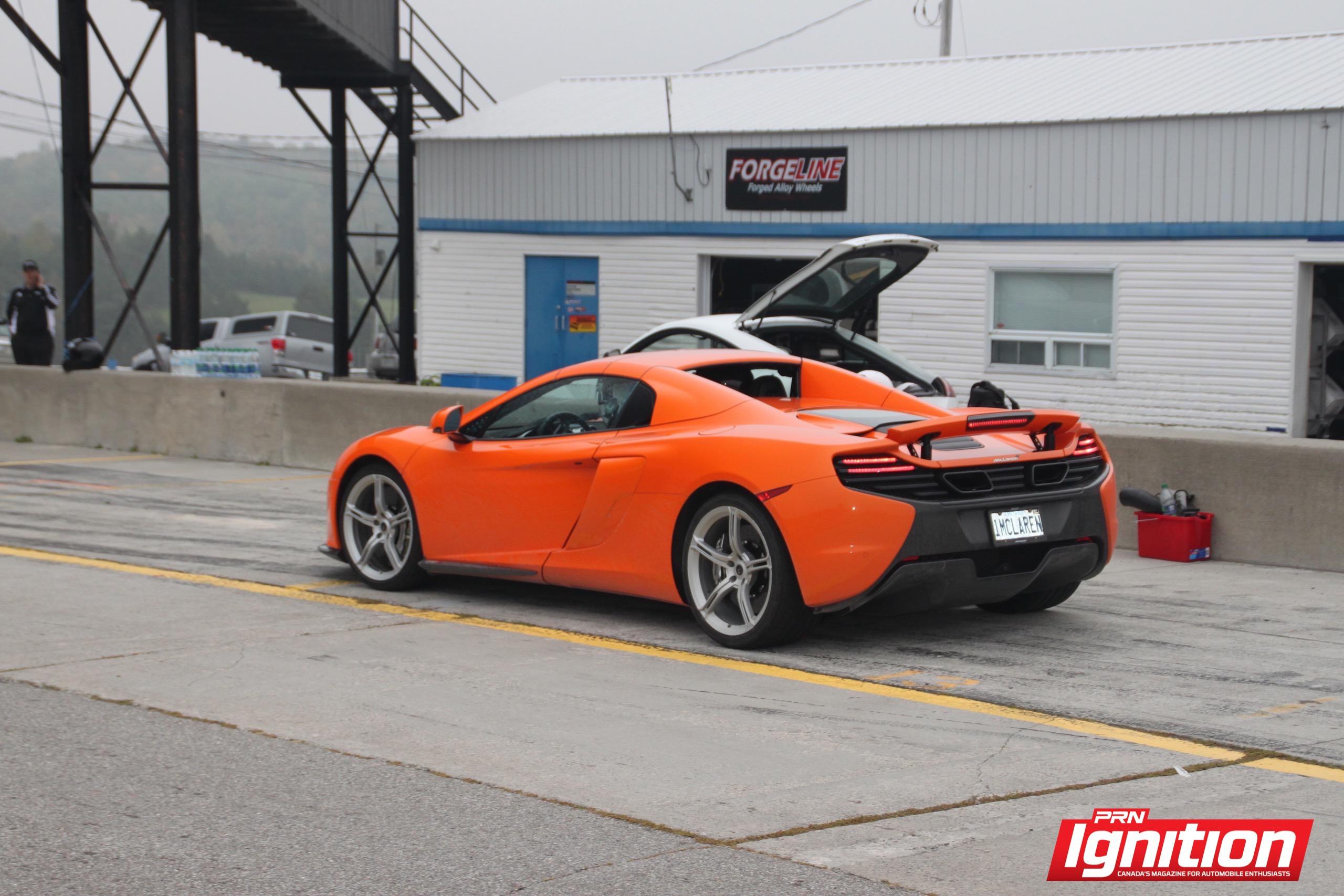
From the front, the 650S looks like the McLaren P1. From the rear, the hindquarters taken from the 12C make it look like a spaceship! It certainly screams ‘Hey, look at me!’ and it blasts off like a rocket. That it costs more than many houses, I can only imagine what the neighbours were thinking. The interior is all business. The business of pure, unadulterated driving nirvana. Things are spartan in the low-slung cabin. It’s not cramped at all, it’s quite ergonomic actually; built more for high-performance and speed than it is comfort or luxury.
Storage space is in short supply (perhaps by design) – there’s not even a glovebox, and the cupholders are tucked up under the angled centre console making them awkward to access. The rest of the cockpit is decked out with several yards of decadent, optional carbon fibre for various panels and trim pieces and top-quality leathers that certify the cockpit as high-end. There are buttons and switches to control everything, including the seven-speed seamless shift dual clutch gearbox. While I wasn’t overly impressed with the performance of McLaren’s Iris touchscreen interface (it is intuitive, but slow), I do like that there are no redundant controls on the steering wheel.
 This is a driver’s car after all – one that can get you into a lot trouble. Rather, it’s a car you can get into a lot of trouble with. In hot water with the spouse – “Slow down, honey!” Boiling water with the mistress (if you’ve got one) – “Go faster!” Or up the creek with the law – “Pull over!” But I digress.
This is a driver’s car after all – one that can get you into a lot trouble. Rather, it’s a car you can get into a lot of trouble with. In hot water with the spouse – “Slow down, honey!” Boiling water with the mistress (if you’ve got one) – “Go faster!” Or up the creek with the law – “Pull over!” But I digress.
The McLaren 641-hp twin-turbocharged V8 engine spews aural magnificence from the sport exhaust, and the 500 lb-ft of torque it produces is more than capable of turning cold rubber into smoking hot matchsticks in a matter of seconds. It redlines at 8,500, and makes 95 percent of its power right in the sweet spot between 3,000 and 7,000 rpm. That translates into mind-boggling performance.
Most supercar aficionados aren’t too concerned about fuel consumption, but those who are will be delighted to discover the 650S is rated an optimistic 11.7 L/100 km combined. As it were, I managed to overcome my primal urges and observe restraint with my right foot; and, after pouring 83 litres of Ultra 94 fuel into the M838T dry sump engine and putting 613 km on the odometer, it adds up to 13.5 L/100 km in the real world. That’s darn right respectable by supercar standards, but it could be even better if it were to have an automatic stop/start function that’s now common on many high-end performance cars.
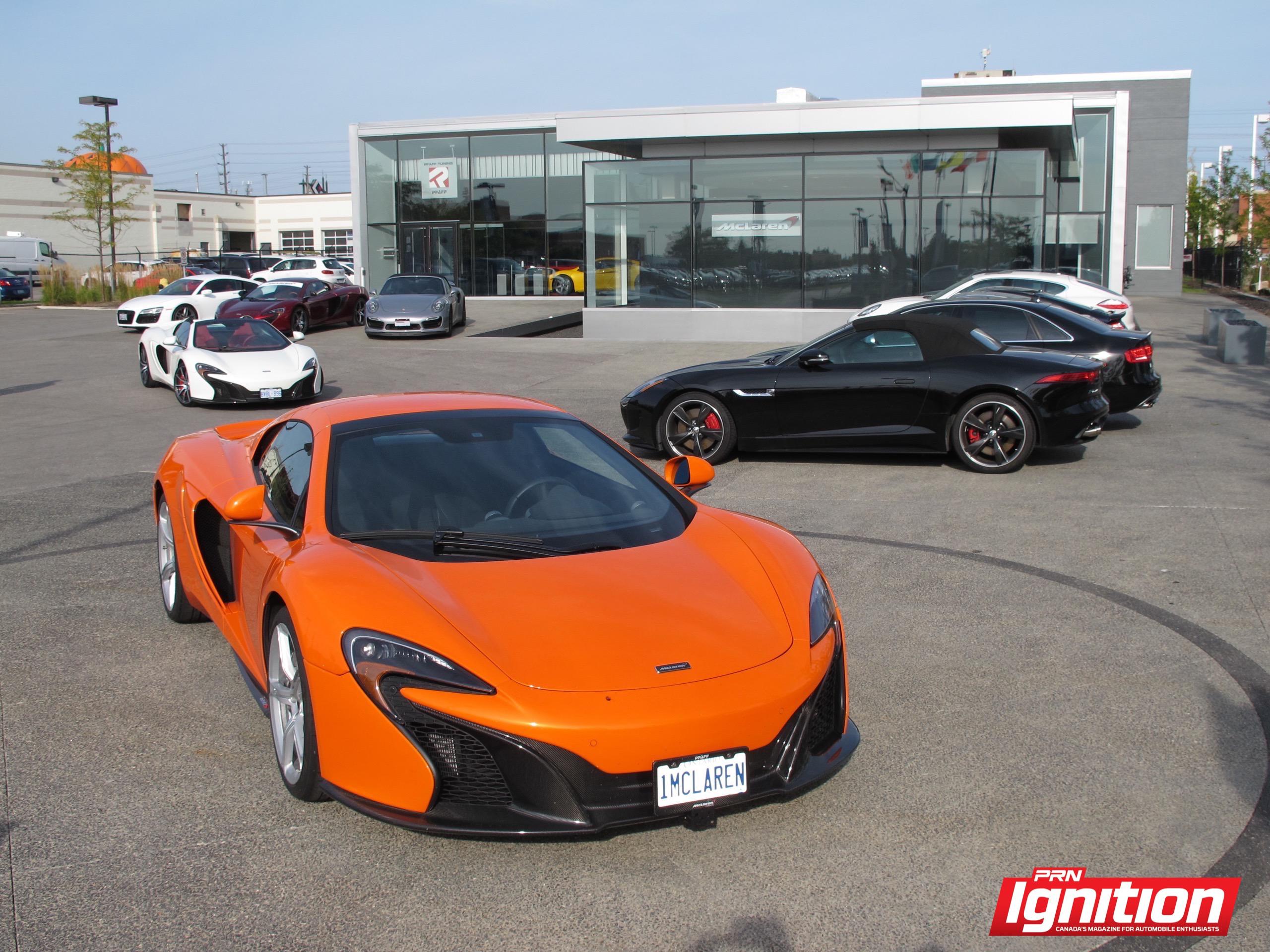
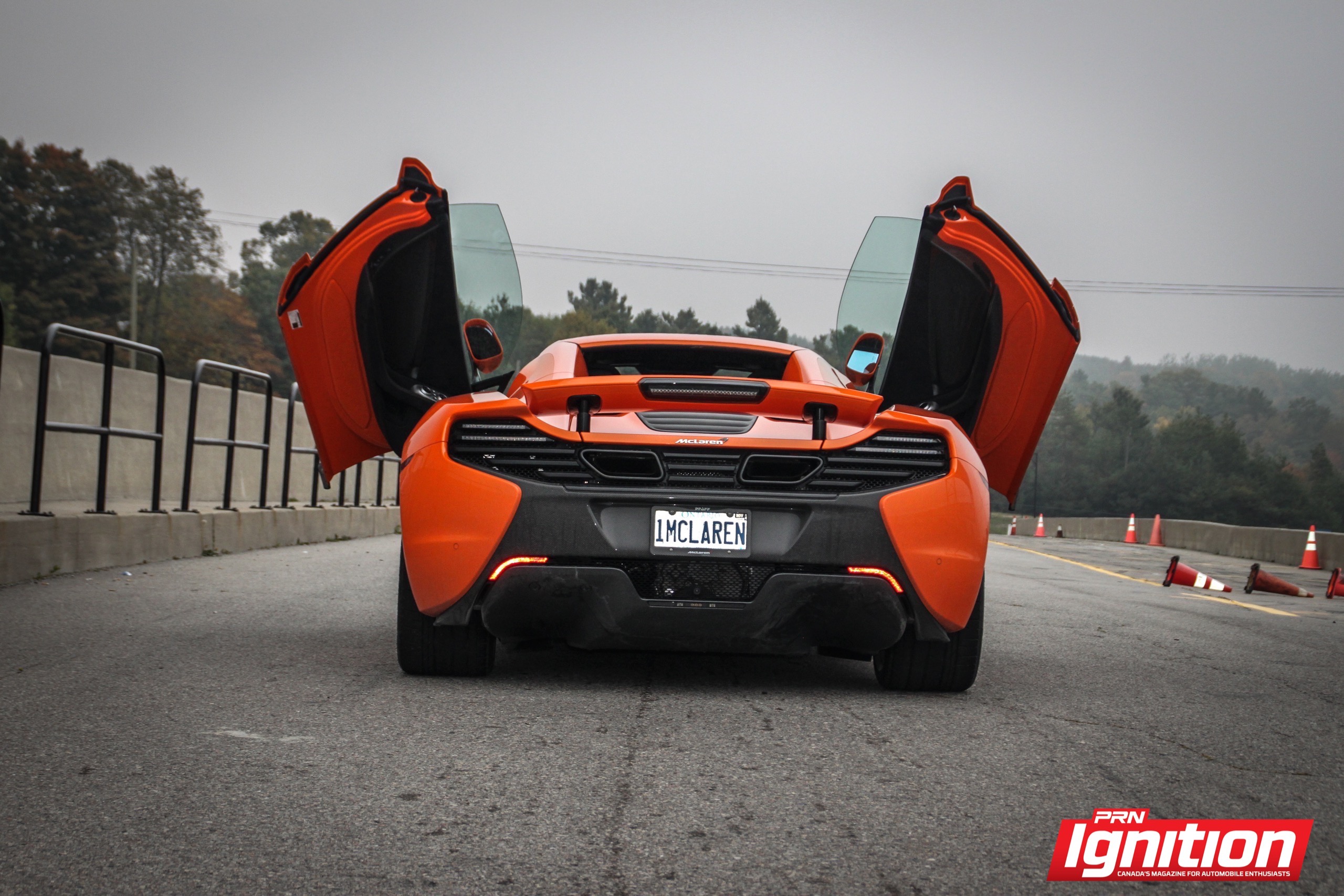
With a top speed of 333 km/h (207 mph), the 650S is one seriously fast car. Not as fast as its legendary predecessor, the McLaren F1 road car, which held the world record for top speed in a production car at 386.7 km/h (240.3 mph) almost two decades ago. The 650S isn’t vying for the title of “world’s fastest” anymore – there are several faster cars out there, including the $845,000 Porsche 918 Spyder – but it is quicker than the F1 by a full second from 0-100 km/h! Not only that, it runs the quarter mile in 10.6 seconds at 222 km/h, and does a standing kilometre in 19 seconds flat. My knees are wobbly just thinking about it.
Officially, McLaren says it will do 0-100 km/h in three seconds flat, which is faster than any other road car I’ve tested, including its predecessor the 12C (3.1 s), Porsche 997 Turbo S (3.3 s), Audi R8 V10 Spyder (4.3 s). It is also capable of going from 0-200 km/h in only 8.6 seconds. That’s as fast as fast as the Mazda 6 zoom-zooms to 100 klicks.
More amazing, perhaps: the massive 394 mm front and 380 mm rear carbon ceramic brake rotors (optional), active Airbrake rear spoiler and Pirelli P Zero Corsa tires bestow amazing stopping power. The 650S decelerates from 100-0 km/h in 30.7 metres (101 ft), 200-0 in 124 m (407 ft) and 271 m (889 ft) from 300-0 km/h.
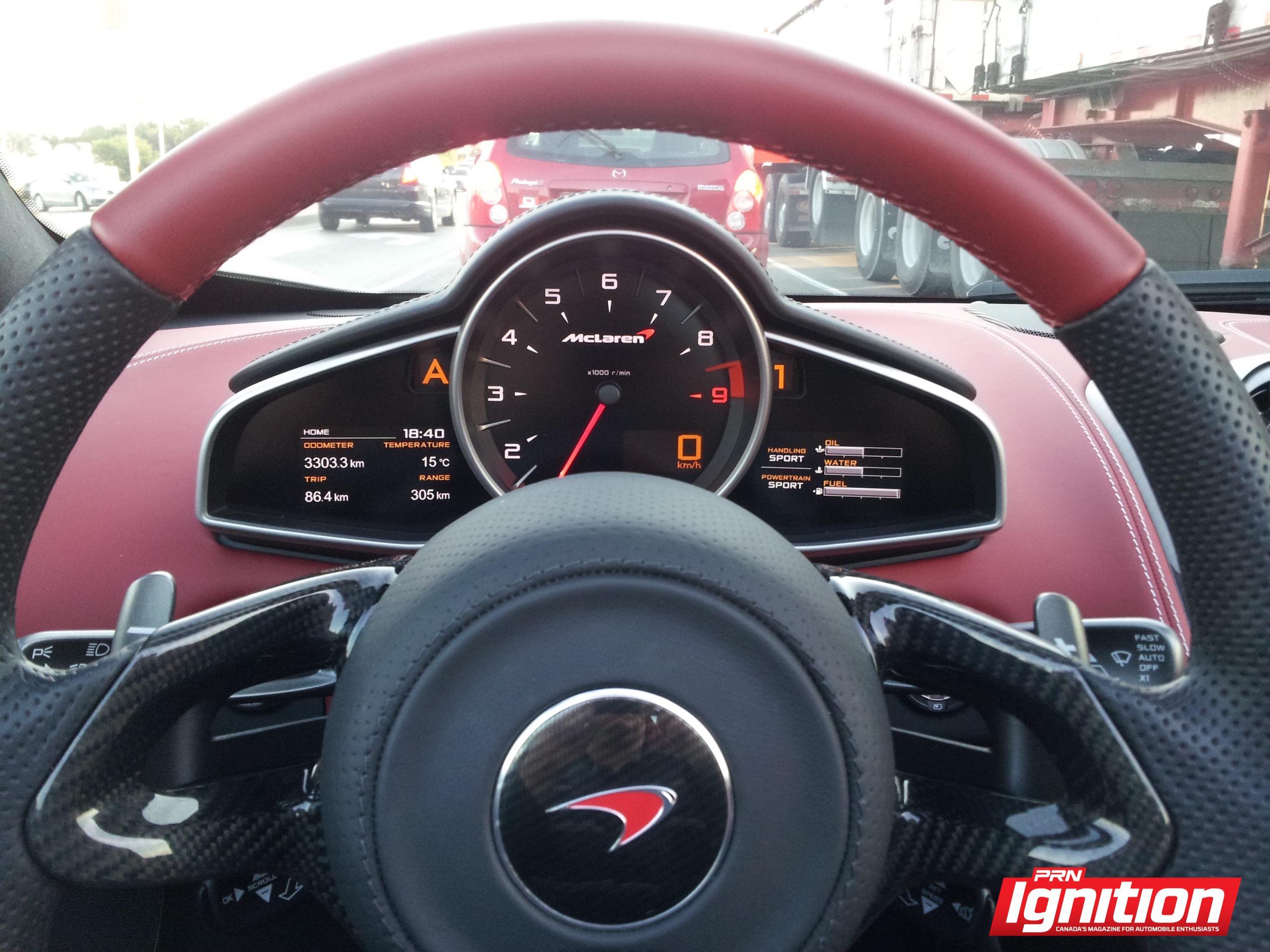

On public roads, passing cars is like swatting flies, and 80 to 120 happens in the blink of an eye. I didn’t try the launch control feature, but a five-second stab on the throttle fires it like a missile to speeds that are hyper-illegal on any monitored road in the galaxy anyway.
The 650S’s carbon fibre monocell chassis is rigid, strong and highly responsive. And because of its F1-derived flat underbody and rear diffuser, the faster the McLaren is driven, the more it sticks to the road. It’s not harsh or bumpy when driving around town at the speed limit, and the ride is remarkably smooth and well-composed when cruising along on the highway in the normal (default) or sport handling and transmission modes.
It truly does come to life, however, when it’s in its element on the racetrack in sport or track modes, so I feel extra lucky that McLaren Toronto was able to arrange an exclusive track test on the Grand Prix road course at Canadian Tire Motorsport Park (CTMP) during the final Pfaff Tuning track day of the season.
There are several driver modes, normal being the default. Once activated, you can dial in any combination of normal, sport and track settings for handling and shifting via two control knobs on the centre console. The left side changes its handling characteristics, including the roll stiffness and ESC settings, while the right side changes the throttle response, shift maps and noise levels on the fly.
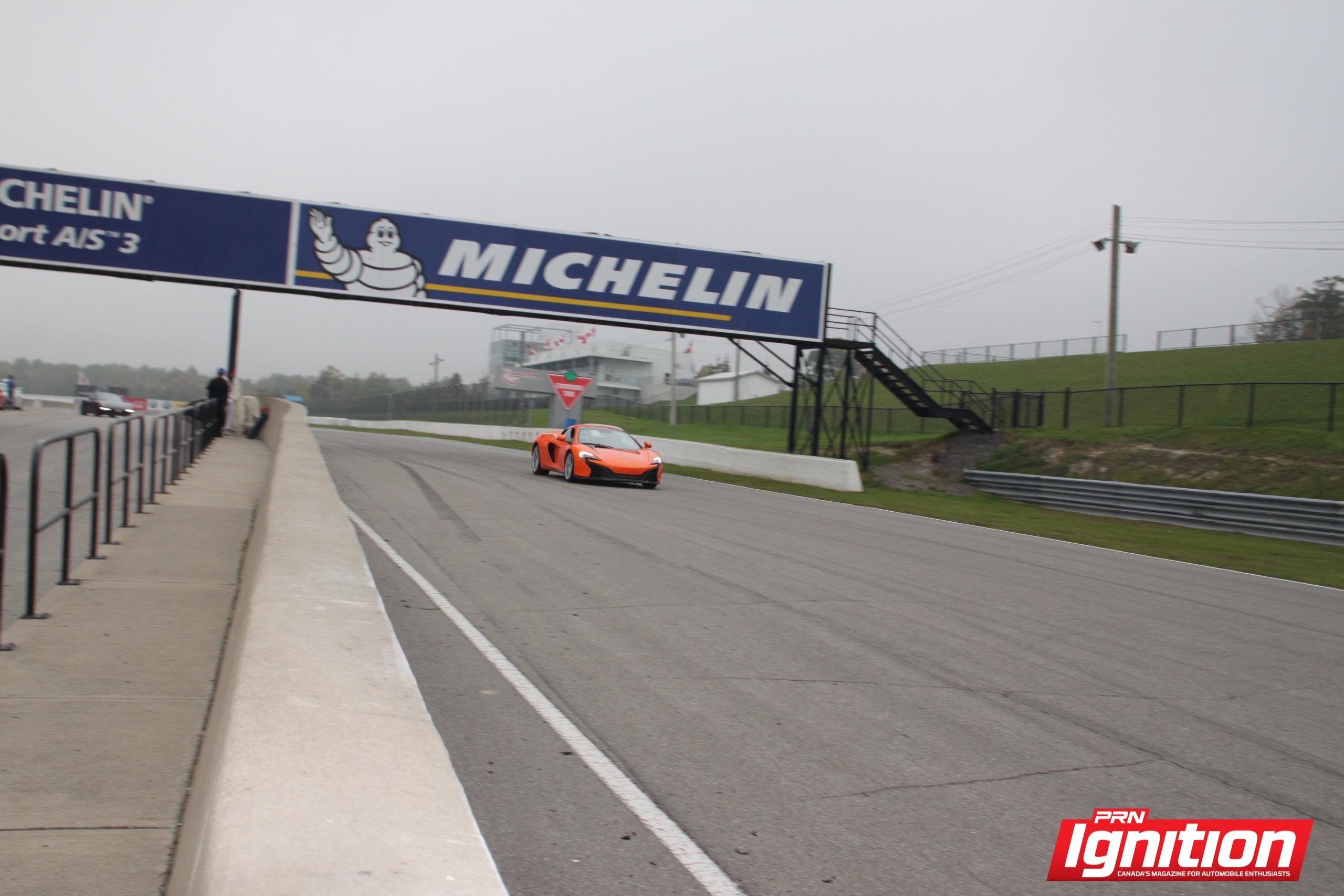
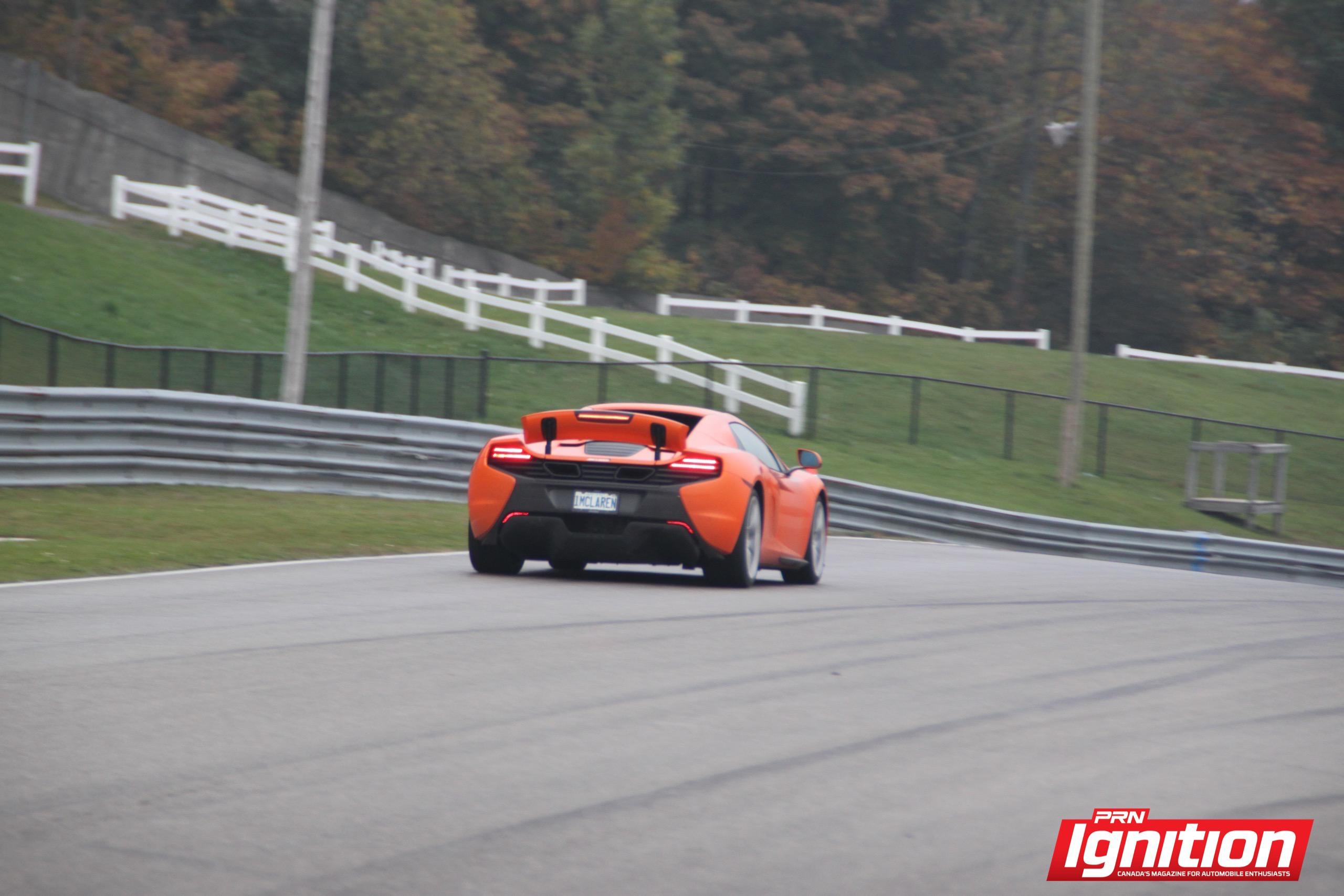
Gearshifts are already lightning fast and seamless in automatic mode, and only improve as you dial in more performance per above. The paddle shifters provide an even stronger bond with the car and the track in manual shifting mode. Winter mode is also available.
Traction control is disabled in track mode, but the car is still glued to the corners thanks to McLaren’s open differential and brake steer feature. Factoring in speed and steering angle, this banned-from-F1 system uses the rear brakes to manage grip, control understeer and oversteer when cornering at speed; and could make even Robert Kubica look like a hero. The P Zero Corsa tires are grippy, quiet and capable at speed.
Combining double wishbones with coil springs and pneumatically-controlled hydraulic dampers, McLaren’s ProActive Chassis Control automatically controls the suspension depending on what mode the car is in. Body roll is already close to non-existent, and you can firm up the ride to your liking depending on where you are. Compared to the 12C, the 650S offers a much more refined ride in every respect. With all the extra power it’s got, there are few cars that it can’t run with.
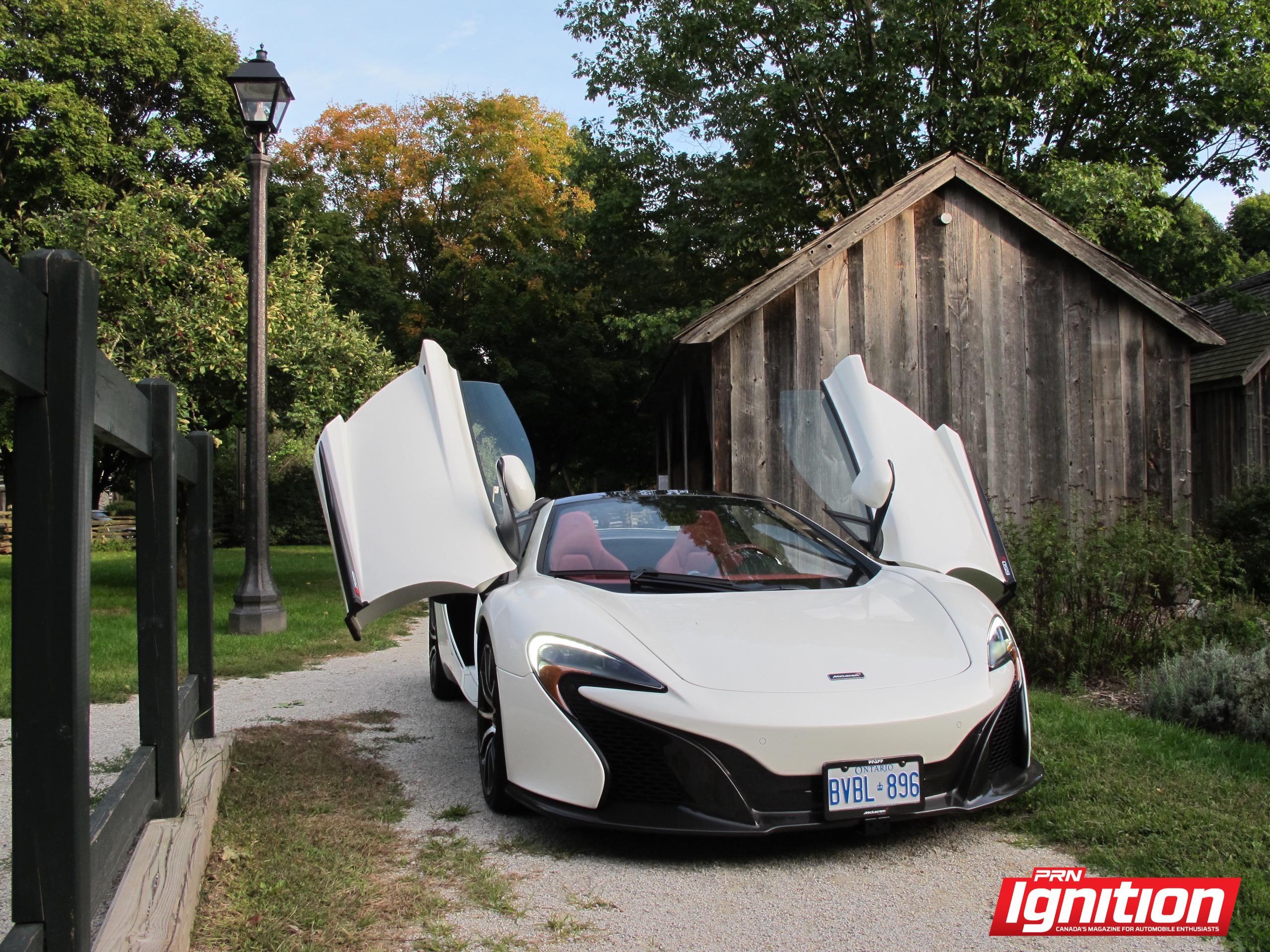
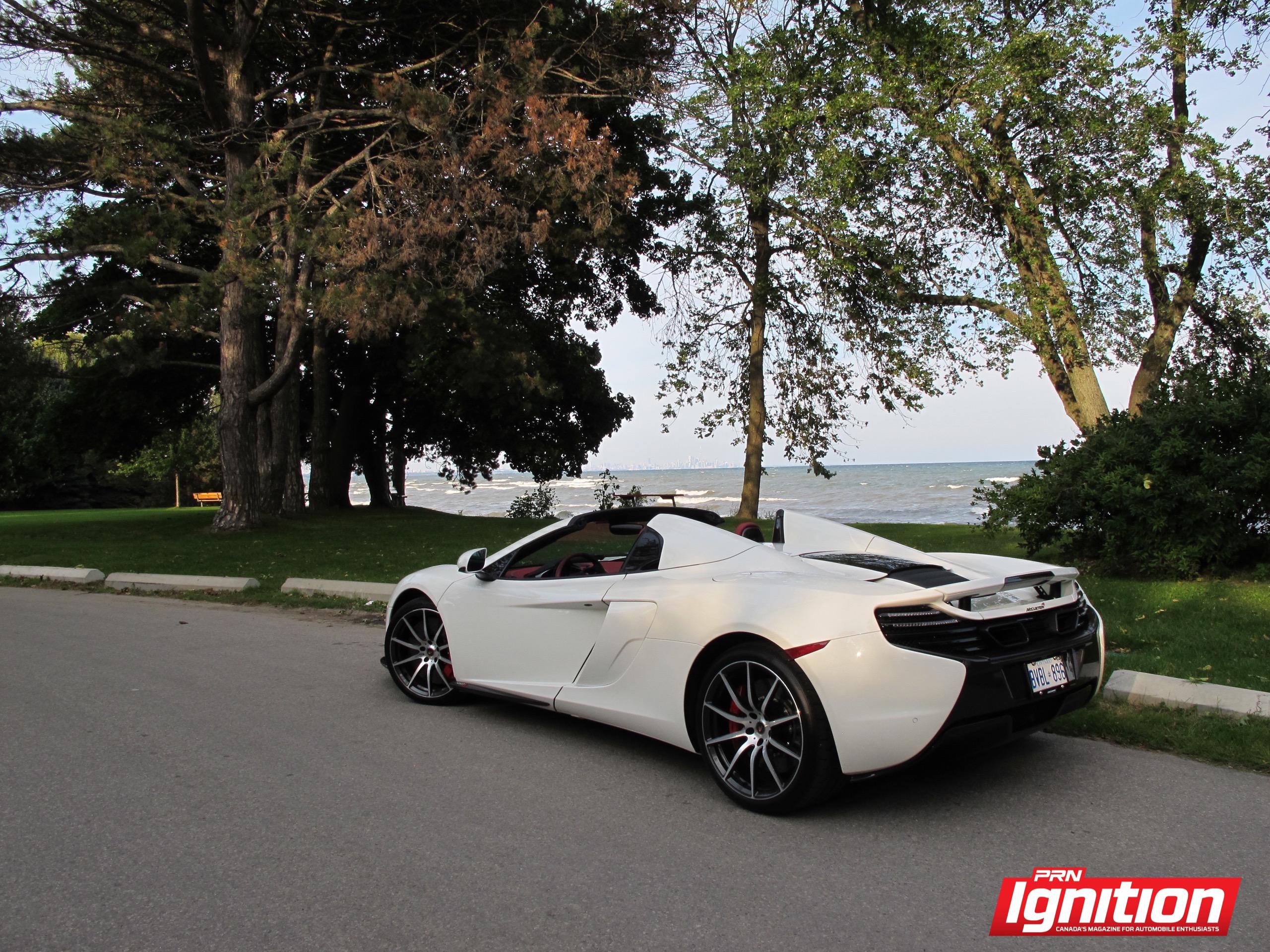
The 650S’ active aerodynamics come into play on the kilometre-long, uphill Andretti straight where the DRS system lowers the rear spoiler to provide fast, straight-line speed. At the end of the straight where you’re carrying some very serious speed, the airbrake pops the spoiler up under hard braking to instantly increase rear downforce by 20 percent to turn a panic stop into smooth sailing. I’m braking after the Canadian Tire bridge, but it’s still too early. The highest speed I saw at the end of the straight is 253 km/h, but former Pfaff racecar driver Kyle Marcelli was clocked doing over 275 km/h there earlier in the year.
The 650S is available in a hardtop coupe that starts at $385,000. It is 40 kilograms lighter and 20 grand less than the as-tested Pearl White Spider model and its electric targa top. The former is perhaps better suited to for hardcore track enthusiasts while the latter might be more befitting of an everyday supercar. Both will impress on the road or the racetrack, so it’s really a matter of preference more than anything.
For the same base price of the 650S, one could buy a 2015 Audi R8 V10 plus Coupe ($187,800) and have enough left over for a 2015 Corvette Z06 when it goes on sale in late spring. The total cost of options on this car ($77,645, see essentials for detailed pricing) adds up to more than enough for a new Porsche Boxster or Cayman S. And, all of the carbon fibre here could offset the cost of a Subaru WRX STI, which, incidentally, is the first car I would buy if I were to win the lottery.
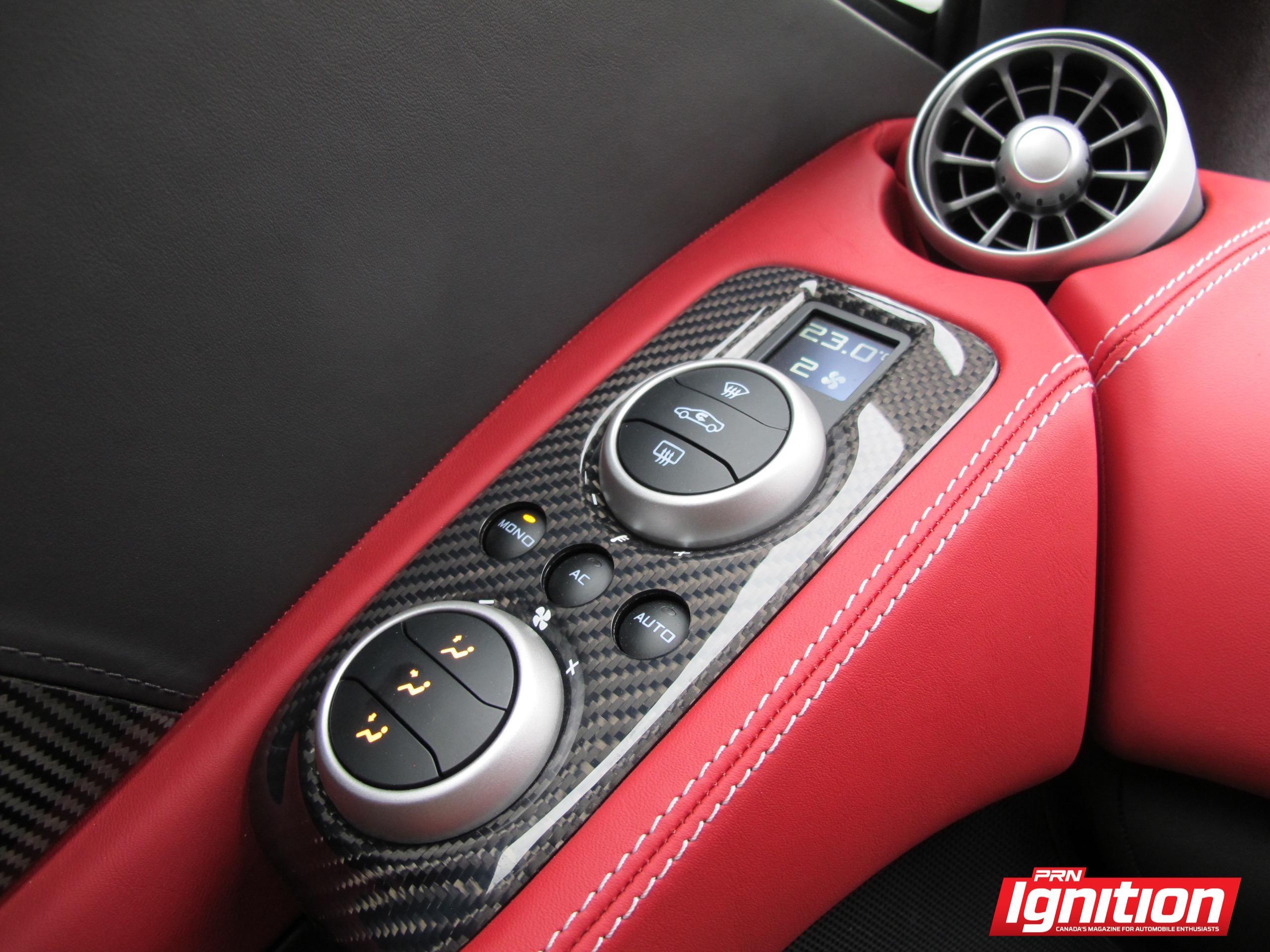
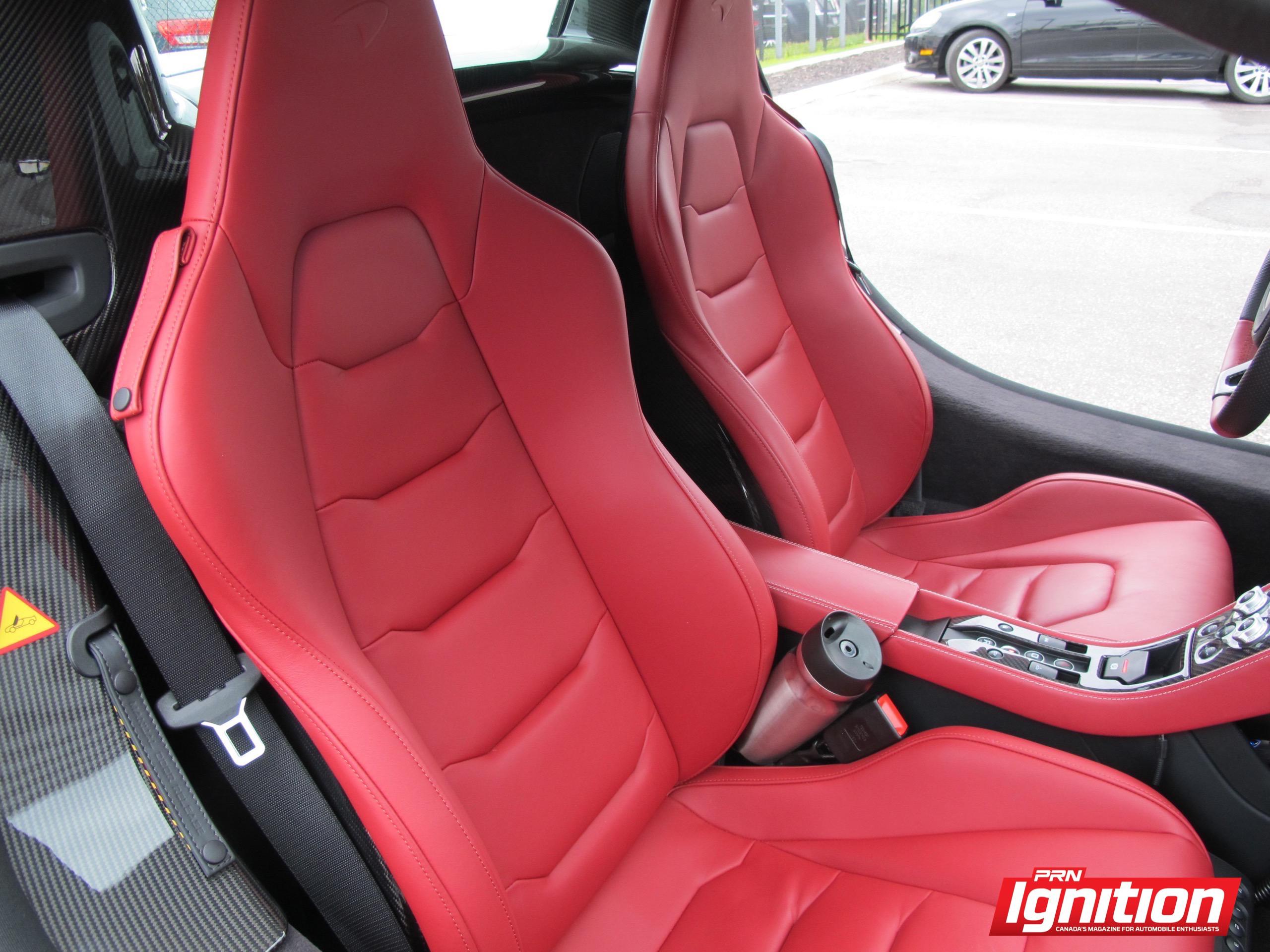
There’s no way of dancing around it – purchasing a 650S will cost you a pretty penny, but the whole experience behind the wheel is quite engaging whether you’re driving on the road or on the track. It does both extremely well, but while public roads will only give you a taste of this car’s massive potential, you’ll most certainly need to become a track day regular if you are to get anywhere near this car’s stratospheric limits.
If owning an elite supercar is at the top of your list, the 650S most certainly qualifies. And if driving a supercar – I mean really driving it – is also a priority, Pfaff has that covered too, via its own CTMP track days. Compared to other supercars out there, the 650S is not at all plebeian. Nor is it gaudy. And yes, it is amazing! I wouldn’t change a thing.
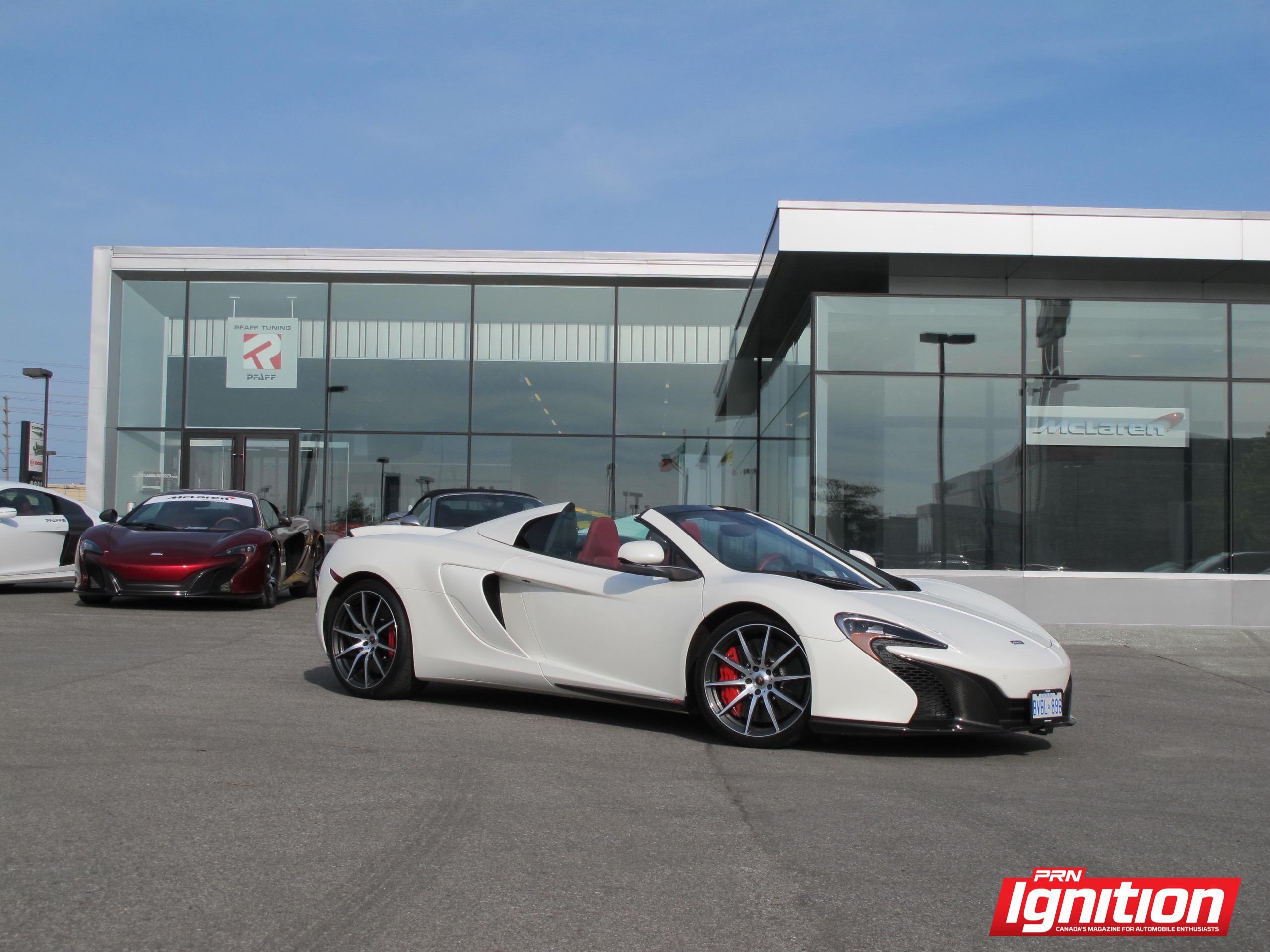
ESSENTIALS
2015 McLaren 650S Spider
Base Price: $305,500
As tested: $382,710 (before dealer options & charges)
Engine: 3.8L twin-turbocharged 90° V8 (M838T)
Horsepower: 641 bhp @ 7,250 rpm
Torque: 500 lb-ft @ 6,000 rpm
Dry Weight: 1,370 kg
Configuration: RMR
Transmission: 7-speed dual clutch gearbox
Tires: Pirelli P Zero Corsa (235/35 R19 front, R305/30 R20 rear)
Fuel Economy Ratings (city / hwy.): 13.5 L/100 km (613 km)
Warranty (mos / km): 36 / unlimited
Options on test vehicle ($77,645): Elite "Pearl White" paint ($6,040); carbon fibre diffuser ($4,700), carbon fibre engine covers ($3,360); carbon fibre exterior upgrade – rear bumper, door blade, front splitter ($12,520); sport exhaust ($7,080); alloy oil/coolant caps ($530); electric/heated memory seats ($4,030); contrast stitching – dash/steering wheel; matching steering wheel ($610); carbon fibre interior upgrade ($4,700); carbon fibre seat backs ($4,700); branded carbon fibre sill panel /w model logo ($3,960); carbon fibre wheel arches ($3,360); extended carbon fibre interior upgrade ($6,670); Meridian surround sound upgrade ($4,540); parking sensors (2,420); rear parking camera ($1,520); fire extinguisher (210); warning triangle and first aid kit ($70); carbon brakes ($1,350); forged wheels ($3,630); car cover ($680).






















